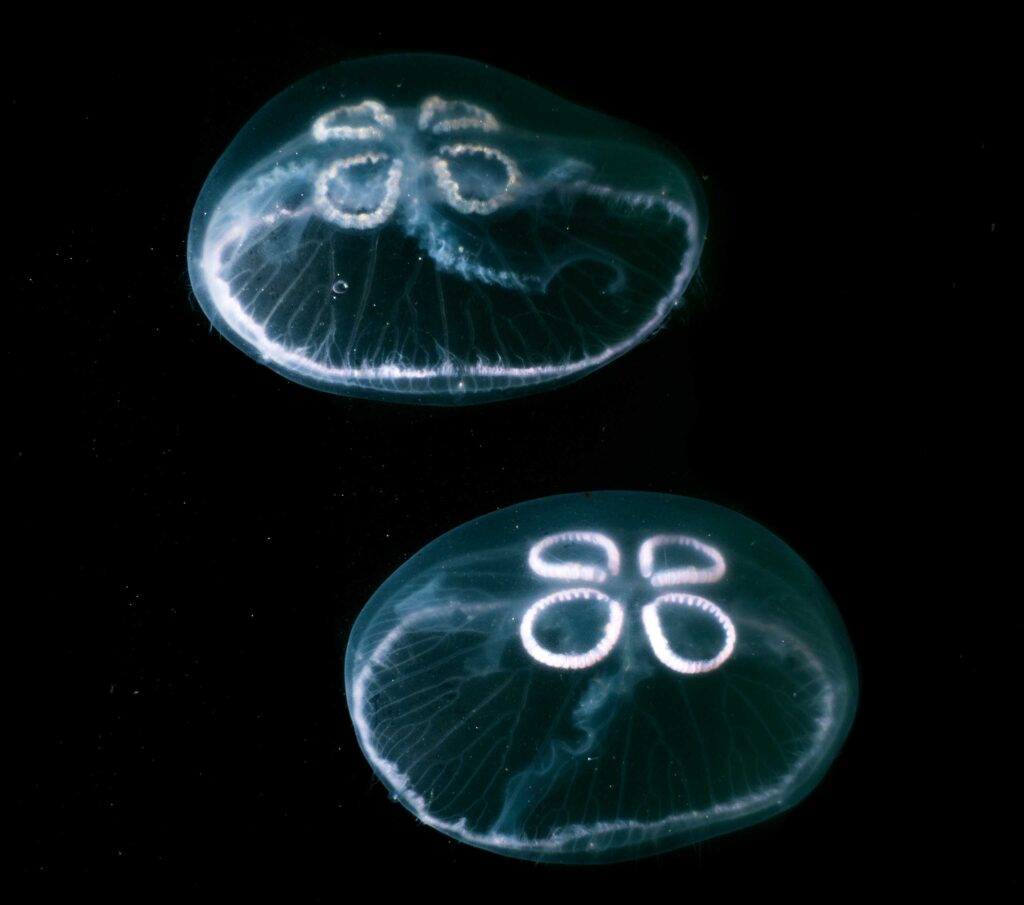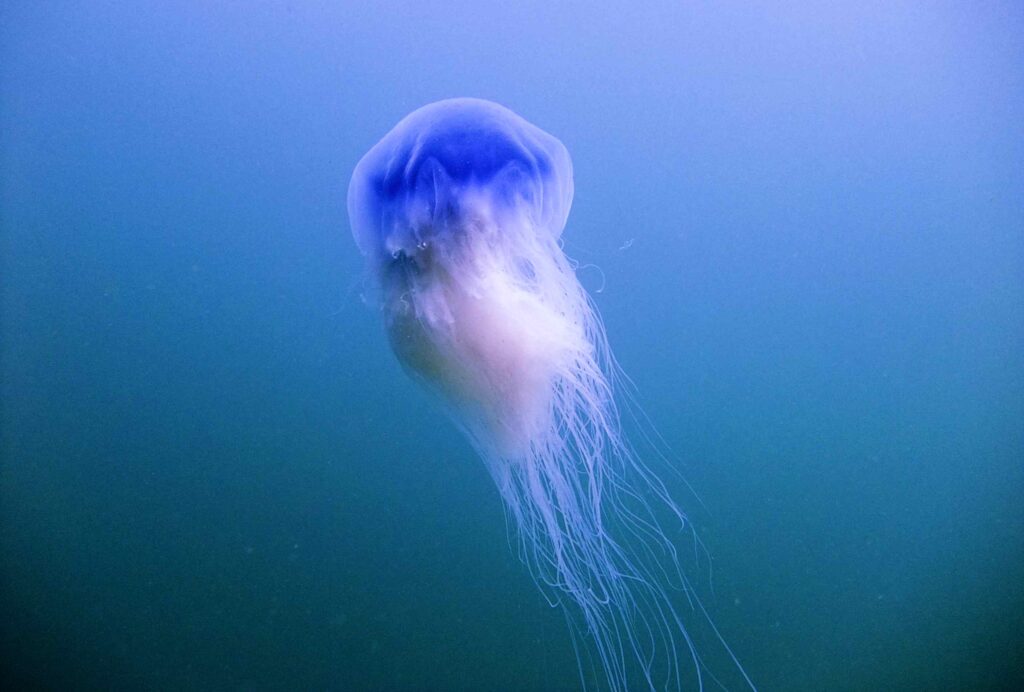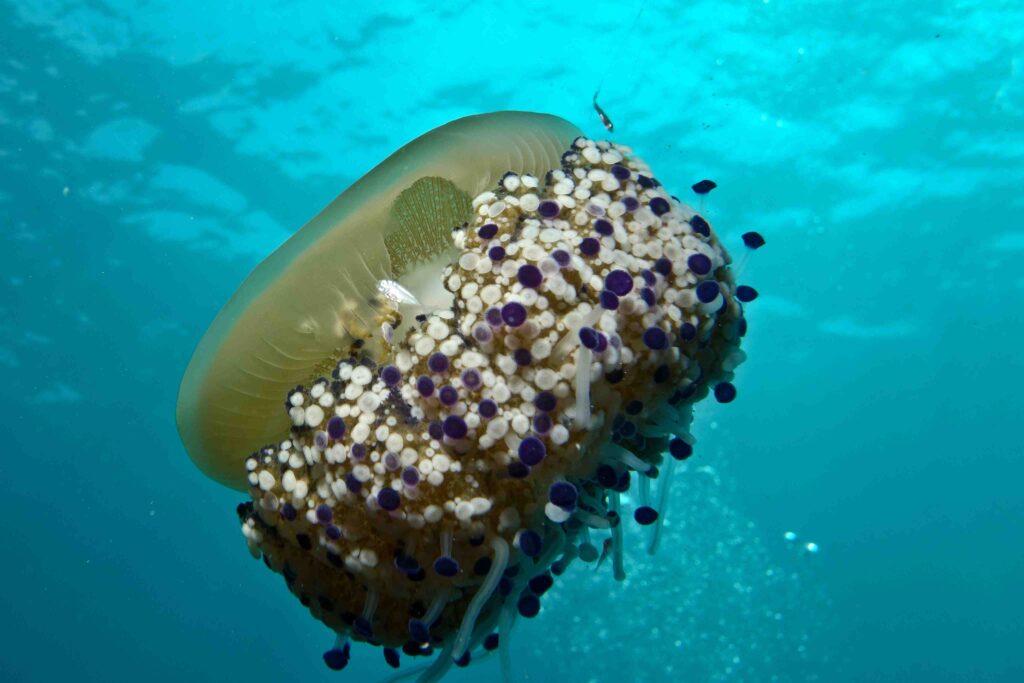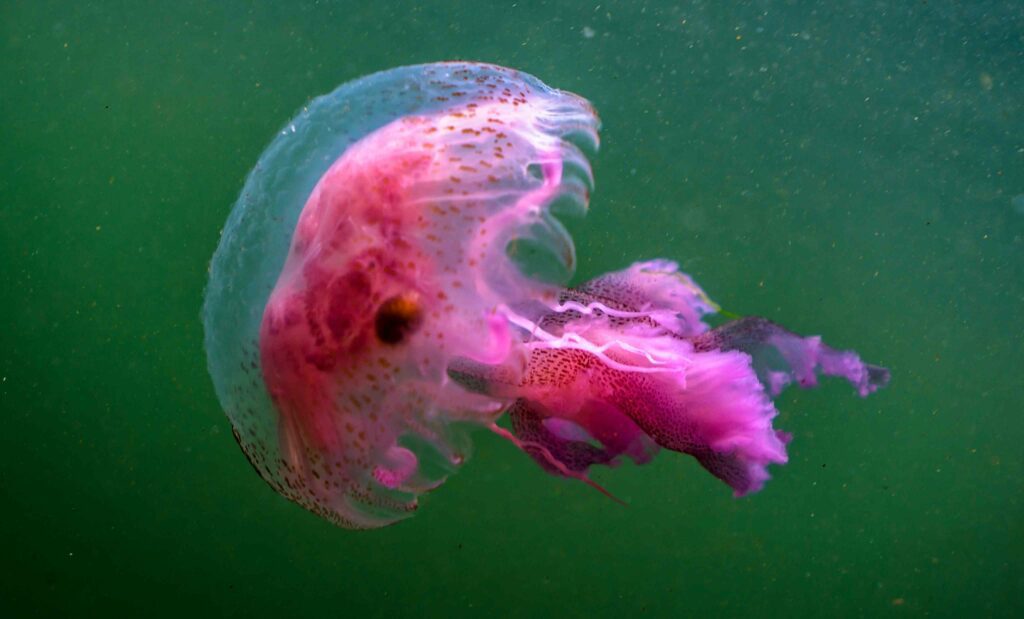Own up if you hadn’t realised it was World Jellyfish Day today (3 November), but to mark the occasion the Marine Conservation Society has released its first Wildlife Sightings report.
This is based on findings over a 12-month period from the UK charity’s long-running citizen-science project, which asks the public to report jellyfish and marine turtle sightings around UK and Irish coasts and assists in identifying distribution trends.
It also serves as a reminder to underwater photographers of the increasing opportunities these photogenic species can offer in home waters.

A total of 1,315 jellyfish sightings were reported in the period between 1 October 2021 and 30 September 2022, with eight familiar species dominating – but three less-common visitors were also spotted, increasing in numbers from 5 to 9%.
Compass and moon jellyfish made up 46% of all sightings, almost equally divided in numbers and often seen in groups or “smacks” of 100-plus. Lion’s mane jellyfish came third (9.4%), closely followed by blues (8.7%)

Storms in October 2021 and February 2022 led to a 2% increase in Portuguese man o’ war sightings. These open-ocean drifters resemble jellyfish but are in fact siphonophores. During the reporting period strong westerlies carried them across the Atlantic to turn up in the South-west of England and Scotland’s west coast.
Sometimes stranding at the same time were violet sea snails, floating on the surface in bubble-rafts and feeding on the Portuguese man o’ wars.
Other rare visitors were bioluminescent crystal jellyfish, usually found in the Pacific but increasing in numbers to make up 3% of total sightings, and sea gooseberries (1%) – in both cases the highest percentages reported to date.


Sea turtles visit the UK in summer to feed on jellyfish, and six of the 11 reported were live leatherbacks, the largest species, on the Scottish coast. The turtle data feeds into the Turtle Implementation Group’s annual strandings report.
The MCS’s tracking reports, particularly of rarer jellyfish species, can show how warming sea temperatures might be affecting their diversity in the UK. The long-term dataset can also help to predict where large jellyfish blooms might occur, to help ease problems these can cause to marine industries.


The MCS celebrates the 20th year of its national jellyfish survey next year. “Investigating the relationships between species can help us to discover more about our amazing underwater world and how it might be changing in response to things like climate change,” said MCS citizen science project lead Amy Pilsbury. “A huge thank you to everyone who reported their sightings.”

The Marine Conservation Society project is funded by the government's Green Recovery Challenge Fund and is being delivered by the National Lottery Heritage Fund in partnership with Natural England, the Environment Agency and Forestry Commission.
Also on Divernet: 11 Great Reasons To Be A UK Diver, Spinnaker Goes Green With Hass Watch

